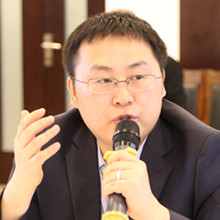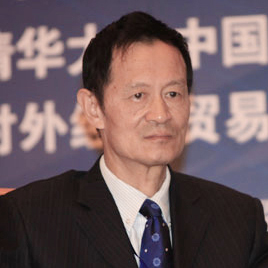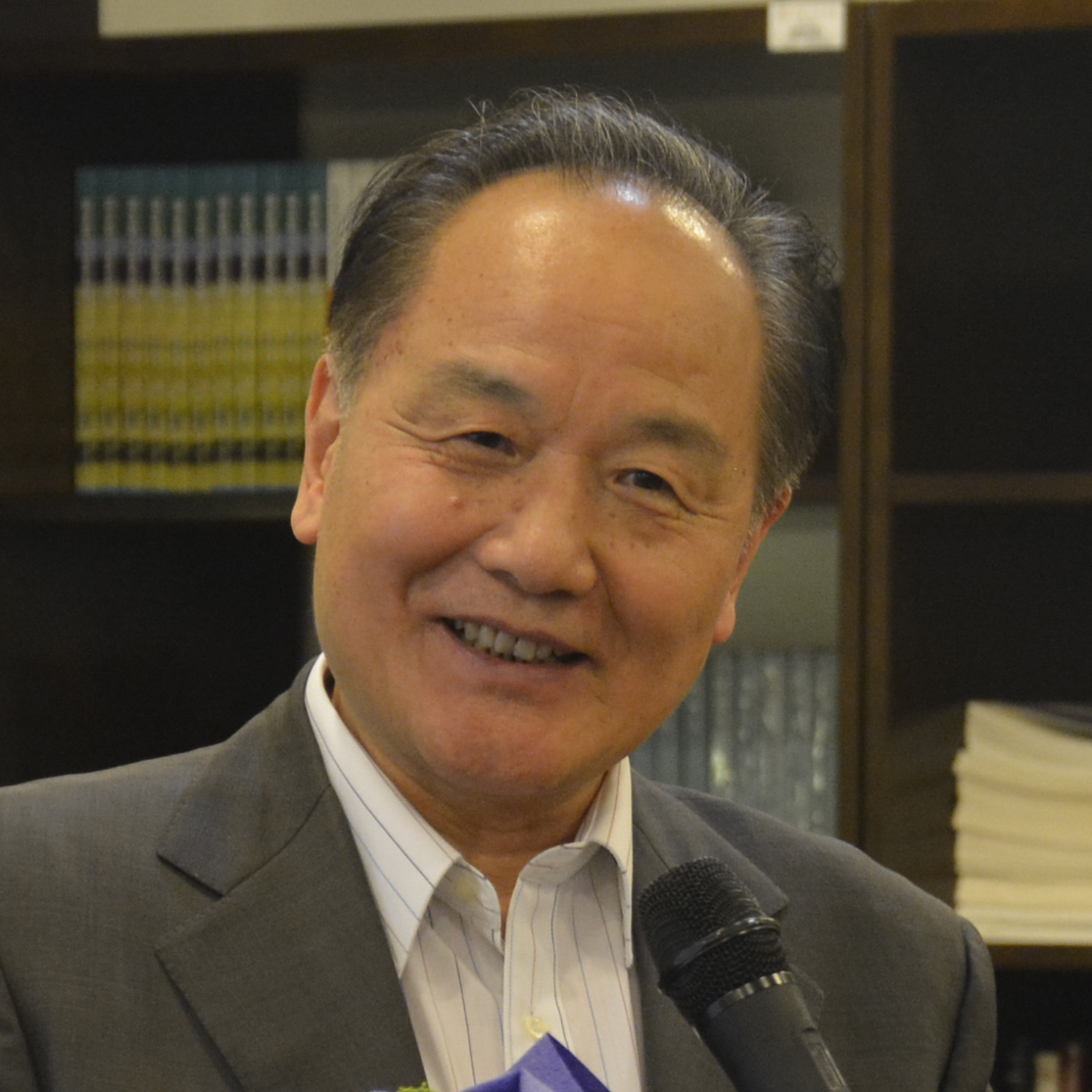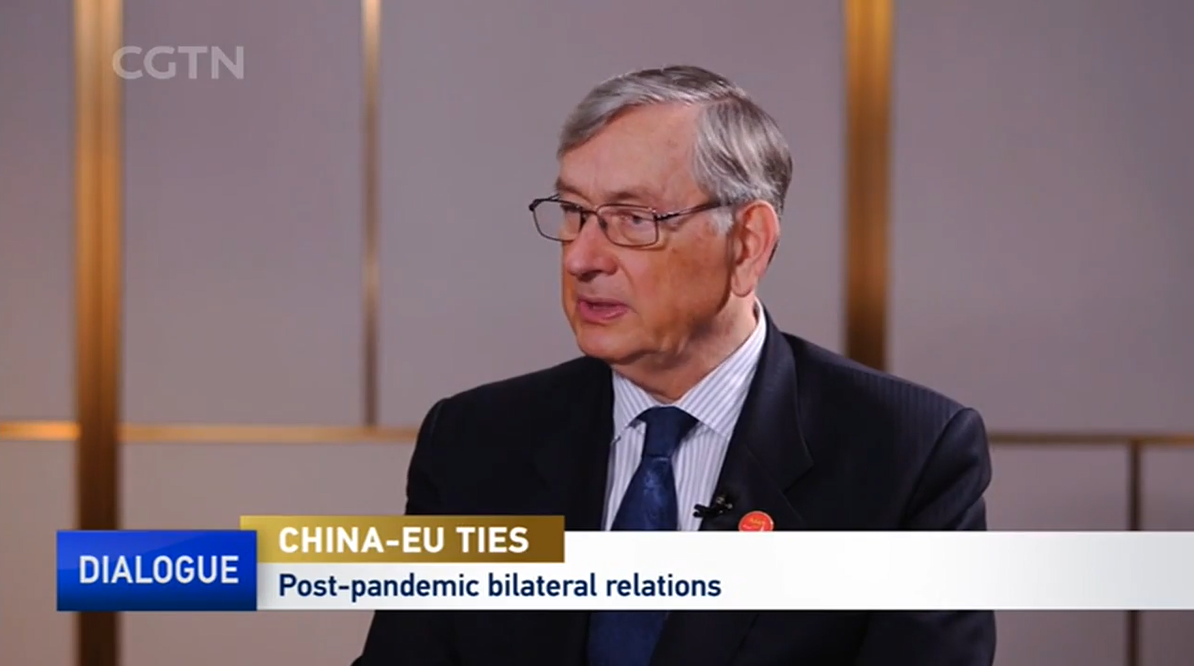Commentaries
Your Present Location: Teacher_Home> He Weiwen> CommentariesHe Weiwen: Wild Allegations vs. Facts
By: He Weiwen Source: China-US focus Published: 2020-05-10
As the COVID-19 pandemic ravages the world, with total cases growing rapidly by the day, U.S. Secretary of State Mike Pompeo has been busy blaming China with unsupported “lab conspiracy” claims and calling the coronavirus the “Wuhan virus.” He presumes to hold China accountable for the origin of the virus and a purported “cover-up.” The attorney general of the state of Missouri filed a lawsuit seeking compensation from China. President Donald Trump shared the allegations. Similar charges and threats against China have come from a few people in European countries, India and Australia, demanding reparations.
Within modern memory, no compensation has ever before been demanded for a natural disaster or financial crisis. Why pick on China?
The compensation demands are based on two shaky assumptions: First, the outbreak happened in China and then spread to the rest of the world. Hence, China is the point of origin. Second, the Chinese government covered up information about the virus, thereby misleading other countries.
The trouble with these assertions, however, is that corroborating evidence is lacking, and the facts that are available tend to prove the opposite.
Possible origins outside China
From the U.S.:
• On March 11, Robert Redfield, director of the U.S. Centers for Disease Control, acknowledged at a hearing in the House of Representatives that some of the deaths from flu in the United States might have been unknown cases of the new coronavirus. Of a total 13,775 fatalities from Oct. 1 to mid-February, 36 were attributed to as an unidentified virus, and some cases predated the first case reported in Wuhan, China in December.
• On April 22, the San Francisco Chronicle reported that the first known U.S. coronavirus death occurred on Feb. 6. The Santa Clara County Health Department identified coronavirus in the patient, an elderly woman who had never left the U.S. and had nothing to do with Wuhan. It shows that the virus was already spreading in the community in early January.
• Michael Melham, mayor of Belleville, New Jersey, said on April 30 that his latest test showed he had contracted the coronavirus as early as in November.
• Andrew Cuomo, governor of New York, said on April 25 that a recent study has shown that the virus in New York had been spread from Europe, most probably from Lombardi, Italy, not China.
From France:
According to the South China Morning Post, a study by the Pasteur Institute showed that the coronavirus discovered in France was an evolutionary branch of the genetic sequence and not from China or Italy. Yves Cohen, chief of two Paris hospitals said on a TV program on May 3 that a re-examination of 24 cases had determined that the first patient had been hospitalized on Dec 27.
From Italy:
The first case was an Italian who had attended a sports game in Hawaii. Coordinated by the Lombardi public health department, 14 research centers completed a joint study that found the virus had begun spreading in the region as early as Jan. 1, with the first case not verified until Feb. 20.
From Japan:
According to Asahi Shimbun, a study by the Japan National Epidemic Research Institute concluded that the virus, which has been spreading fast in Japan since March, had come from Europe and America, not China. The institute recorded the genetic sequence of the virus from 56 patients and made comparisons with 4,500 cases worldwide. The results showed close similarities to the samples from Europe and America. None matched the type in Wuhan.
From the UK:
Star Daily reported on an Oxford University news release on April 23 that presented results of a recent study of their COVID-19 vaccine R&D project. The study compared 3,636 cases in 55 countries and found that 1,854 of the patients (51 percent) had contracted da virus of the Aa2 type, which had been prevalent in Brazil, the Congo, Iceland, the United Kingdom, Italy and the U.S. in February and March, and is different from the type found in China.
From Canada:
A headline in the National Post newspaper announced on May 1: “Canada’s early COVID-19 cases came from the U.S., not China, provincial data shows.” Official data from Ontario shows that during the period from Jan. 15 to April 16, 1,201 cases involved people who had traveled from other countries — 404 from the U.S., 126 from the UK and zero from China. In Quebec, 2,101 cases involved people who had traveled — 373 from the U.S. and only five from China.
The facts above point to the U.S., France and Italy as possible origins, not China only. These findings are only preliminary and subject to further scientific study, but they strongly undercut the allegation of a sole Chinese origin. Calls for compensation are unfounded.
Origin from nature, not lab
• Professor Robert Gary of the Medical College of Durand University in the United States told an ABC reporter that it’s a misunderstanding that the coronavirus originated from a seafood market in Wuhan. He said that studies had pointed to an earlier origin and suggested the coronavirus had been spreading among humans for several years or even decades.
• A paper published in Natural Medical Science concludes that the virus had its origins in nature.
• The world’s top medical magazine, The Lancet, published an article on Feb. 19 by 27 medical experts from eight countries, refuting any assertions of the virus from a lab.
• On May 1, the World Health Organization repeated its conclusion that the coronavirus originated in nature.
• Pompeo has insisted that the virus cam from the Wuhan Institute of Virology, but he has presented no evidence. U.S. Senator Tom Cotton made the same claim but admitted he has no evidence.
• The Office of the Director of National Intelligence, which oversees the U.S. intelligence community, announced on April 30 that there was no evidence of a laboratory origin for the virus. Pompeo then pressed U.S. spy agencies to look for evidence tied to the Wuhan Institute, but China, of course, will not permit any investigation that has political motives behind it.
China cover-up or American delay?
Another unsupported allegation is the China cover-up. Trump and Pompeo have repeatedly asserted that the rampant virus outbreak in the U.S. was the result of a cover-up by China that understated the number of deaths and slowed the information flow about how widespread the infection was. Thus the U.S. missed an opportunity to prepare, they claim.
Let’s check the timeline in both China and the U.S.
China timeline:
Dec. 27 — Dr. Zhang Jixian of Hubei Provincial Chinese Medical Hospital diagnosed three pneumonia patients with different symptoms from what he had encountered before. He reported immediately to the local CDC, which in turn reported immediately to the provincial Health Commission. The provincial commission issued an emergency notice to the whole province on Dec. 30 and at the same time reported to the State Health Commission.
The State Commission sent a group of CDC experts to Wuhan on Dec. 31 and reported to the World Health Organization’s China Representative Office on the same day.
Jan. 3 — China informed the U.S. Centers for Disease Control about the discovery and cases.
Jan. 4 — Phone conversation between CDC directors of China and U.S..
Jan. 9 — China deciphered the genetic sequence of the novel coronavirus and posted it online to be shared worldwide.
Jan. 11 — China’s CDC said the the virus should be treated as highly contagious.
Jan. 20-21 — A group from the WHO inspected Wuhan.
Jan. 23 — China’s State Council declared an overall lockdown of Wuhan and warned the whole country and world of the highly contagious new coronavirus. All provinces of China imposed quarantine measures.
Note that the U.S. had identified only one case at this time.
China’s State Health Commission began announcing daily new cases, accumulated cases and fatalities. Daily new cases publicly reported from Jan. 23 to 31 showed an aggressive upward curve — 259, 457, 688, 769, 1,770, 1,459, 1,737, 1,982 and 2,102.
Jan. 30 — The WHO designates the epidemic as a major event, known as PHEIC (Public Health Emergency of International Concern), even though there were only 82 cases in countries neighboring China and 10 cases in Europe.
U.S. timeline:
Early January — The CDC informed the Department of Health and Human Services of the epidemic. The Office of the Director of National Intelligence also reported it. Alex Azar, secretary of Health and Human Services, reported the potential risks of the epidemic to President Trump.
Jan. 30 — Azar again reported to the president reminding him of the danger. Trump said he was sensationalizing the situation.
Jan. 31 — The White House announced a public health emergency and imposed travel restrictions to and from China. Trump has called it a “travel ban,” even though exceptions were made — for example, for U.S. citizens and family members. People continued to enter the country from China.
Feb. 25 — Dr. Nancy Messonnier, director of the National Center for Immunization and Respiratory Diseases under the CDC, warned of the seriousness of the epidemic, and the stock market tumbled. Trump blamed her, saying she had overreacted.
March 16 — Trump announced social distancing.
If we compare the two timelines, some clear facts appear regarding the U.S. response:
• The U.S. CDC was informed by China in early January. The CDC reported to the Secretary of Health and Human Services. In turn, the secretary reported to the president in mid-January.
• By Jan. 23, China imposed a total lockdown in Wuhan and national quarantine, informing the U.S. of the virus as highly contagious among people.
• By Jan. 31, a week after China’s lockdown and the start of daily update, and one day after the WHO’s global warning announcement, the White House finally announced a public health emergency. In a word, the U.S. missed no information.
Did China suppress information?
It’s true that Dr. Li Wenliang was admonished by local police when he sent a warning about the virus on WeChat on Dec. 30. The mistake of the local police was later corrected by the Chinese central government. However, on the same day, the Wuhan health commission also received a report from the Hubei Provincial Hospital of TCM and issued a warning abit the unidentified pneumonia, which was reported to the National Health Commission. The latter, in turn, sent a group of experts to Wuhan the following day. The commission reported to the WHO that same day. Thus, there was no cover-up within the official public health system.
Did China hide human-to-human spread?
The initial finding of the CDC was “limited human-to-human infection,” which was a bit conservative looking back today. However, the finding was based on only 27 cases. Further findings needed to be based on hundreds of cases. By Jan. 20, the National Health Commission judged that there was already a massive number of contagious people, which led to the Wuhan lockdown and national quarantine.
As COVID-19 was new in China, there was a process for health experts to map the genetic sequence and understand the virus better. But the Chinese CDC never said there was not human-to-human transmission. “no man-to-man infection.” On the contrary, the Chinese CDC suggested it was “highly contagious.”
Based on all the above facts, the only reasonable conclusion is that there was no Chinese cover-up, but there was a very real and measurable U.S. delay. During the 50 days from Jan. 23 to March 16, the U.S. did little to respond or prepare.
On May 1, the U.S. CDC released its report prepared by Anne Schuchat, first deputy director of the agency, which acknowledged the delay in the U.S. response. The report noted that the U.S. announced travel restrictions for China but not for Europe. Then, in February, 139,305 travelers arrived in the U.S. from Italy and 1.74 million from Schengen countries where there was already an outbreak.
Charles Horton, editor of The Lancet, has said that China provided a window of time to prepare, but the UK and United States wasted it.
In conclusion, the allegations about a Chinese origin of virus and a Chinese cover-up all lack merit. Therefore, the recent hoo-ha over compensation is absurd. It’s a malicious cook-up by a bunch of U.S. politicians represented by Mike Pompeo.
An internal memorandum of the National Committee of Republican Senators that was revealed by Politico on April 25 is damning. To win the 2020 election, the memo instructed party members, responsibility for the failure to address the pandemic must be shifted to China.
For that purpose, Republicans must vilify China at every opportunity. They must fabricate stories. As they uniformly stick to their narrative, they can ignore facts and make false stories “true.”
History will prove it to be futile noise that achieves nothing.
The authour is a senior fellow at Chongyang Institute for Financial Studies, Renmin University of China.
Key Words: Facts; Covid-19; He Weiwen; RDCY

















































































 京公网安备 11010802037854号
京公网安备 11010802037854号





